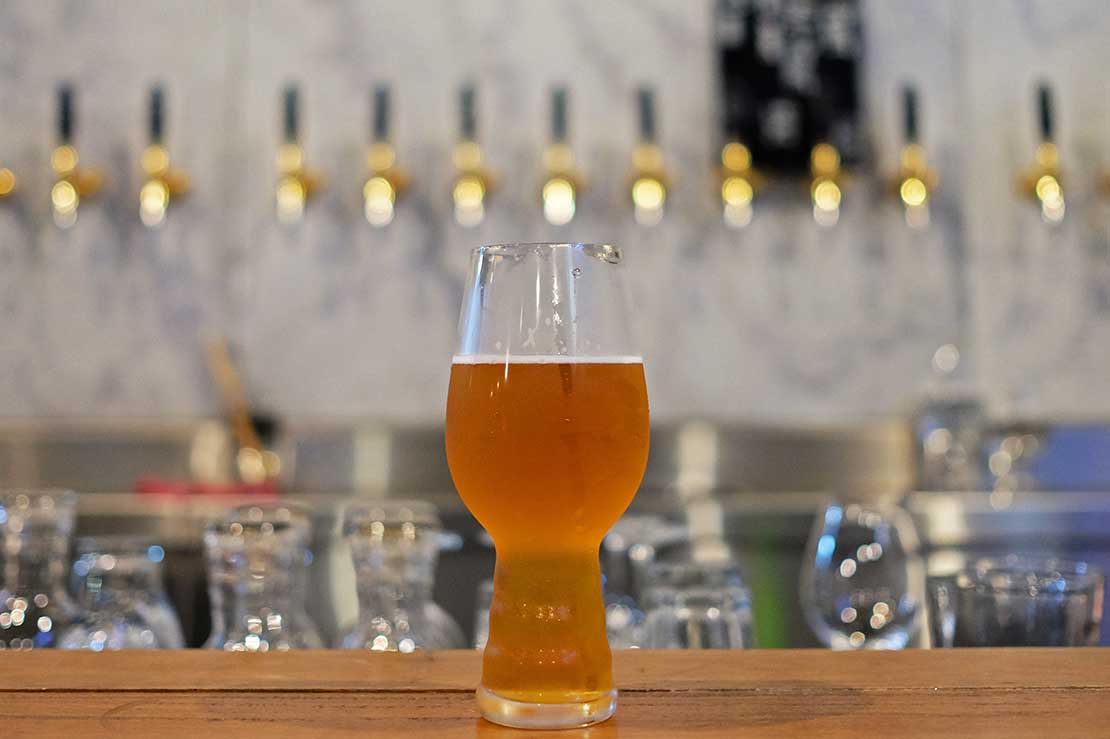WHAT does beer taste like?
Well, that’s a really hard question to define, because the world of beers is a wonderful world of colours, styles, textures, aromas, and flavours that simply cannot be narrowed down to a simple “beer flavour”.
Still, when someone says that something tastes “like beer”, he is probably talking about a “pale lager”, the most common and popular style of beer in the world. You know, that light, straw gold liquid that is served in almost every pub and bar, and makes up for a vast majority of all beers consumed in the world. Heineken, Tiger, Carlsberg, Stella Artois, Asahi ... these are all pale lagers.
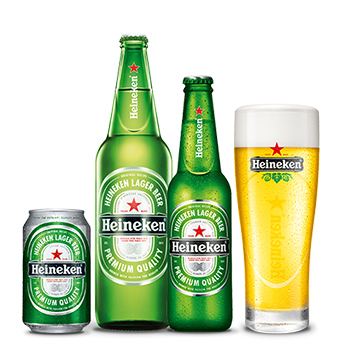
Pale lager: Heineken

Pale lager: Carlsberg
Also commonly seen is the term “pilsner”. This is actually a style of pale lager but many breweries use these terms interchangeably. Examples of pilsners are Belgium’s Manneken Pils, Czech Republic’s Budweiser Budvar, and Pilsner Urquell, which tend to be more heavily hopped.
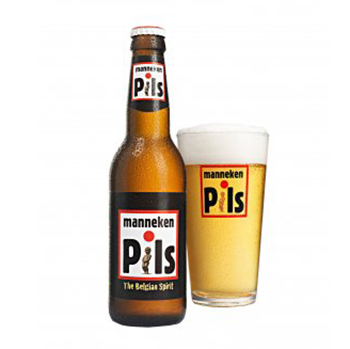
More heavily hopped pilsner is also a type of lager.
Most people would have started their beer journey drinking lager. After all, it’s so easy to get, easy to drink, and probably the most affordable beer as well. But it is not the only beer style in the world. The other most common style of beer are ales, which can be further categorised into hundreds of other sub-styles as well. But that’s a story for another day.
First of all, what is the difference between lager and ales? Well, the main difference is the way they are made. Lagers are produced using bottom fermenting yeasts, while ales use top fermenting yeasts.
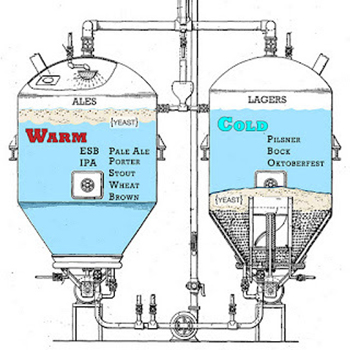
(Image source: Microbewiki)
According to BeerAdvocate’s Yeast Guide, bottom fermentation is a slow process that takes place in colder conditions (around 7-15°C), which causes the lager yeast to grow slower than top fermenting ale yeast, and settle at the bottom of the fermenting liquid. It is commonly used to make lagers, pilsners, and low alcohol wines. The term “lager” comes from the German word, where traditionally after fermentation, true lagers are further conditioned (or “lagered”) in cool conditions for up to several weeks, generally giving clean tasting and crisp beers.
Ale yeasts, on the other hand, are known as top fermenting yeasts because they tend to rise up to the surface during the process, which creates a thick, foamy head. These ferment at slightly warmer temperatures (10-25° C range), producing flavours that are often described as fruity or estery. Ale yeasts are usually used to brew ales, porters, stouts, and wheat beers, among others.
Now that you know how lager is made differently from ales, let’s talk about the beer itself.
As mentioned, pale lagers and pilsners are the most common styles of beer in the world, and are what the general public think of when referring to “beer”.
Usually straw gold in colour with quite a lot of carbonation, pale lagers tend to taste crisp, refreshing, maybe a little malty and hoppy. It makes for a nice cool drink on a hot day, or as a starter drink. That’s not to say that all lagers are like that though, because if you’re looking for something more, more flavour, more complexity, perhaps, then there are several lager style besides the common pale lager.
For example, there are also dark lagers, the amber-coloured Vienna lagers, malty mårzens, strong and complex bock beers, and even smoked lagers. Many craft breweries have also been making their own variations of the style, which are very, very different and much more flavourful than commercial lagers.
Here are some lager styles to look out for:
Pilsner - Pale to deep gold in colour. Slightly sweet bready malt base with a light clean body, moderate hop aroma, somewhat bitter hop finish and fine carbonation.
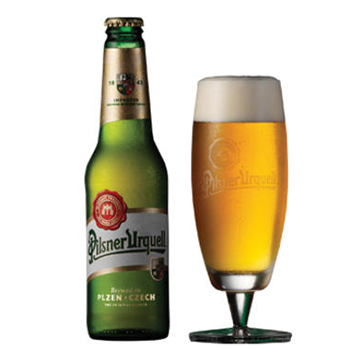
Style example: Pilsner Urquell, ~5% abv; or try the stronger, hoppier and more intense Mikkeller, Draft Bear Imperial Pilsner, ~8% abv.
Dunkel / Schwarzbier (dark lagers) - Dark brown to black in colour. Mildly sweet, chocolate-like and roasty malt flavours, perhaps with some coffee notes. Low hop bitterness. Easy drinking considering the colour!
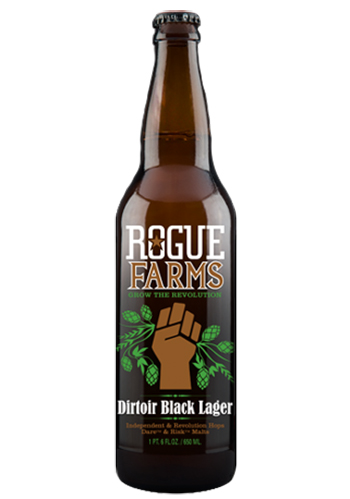
Style example: Rogue Farms Dirtoir Black lager, ~5% abv.
Mårzen / Oktoberfest - Amber to reddish brown in colour. Rich malt with toasty aromas, some caramel. Floral hop notes and clean hop bitterness. Typically released in the spring (Mårzen means March in German), with the fest-style version traditionally released for Oktoberfest.
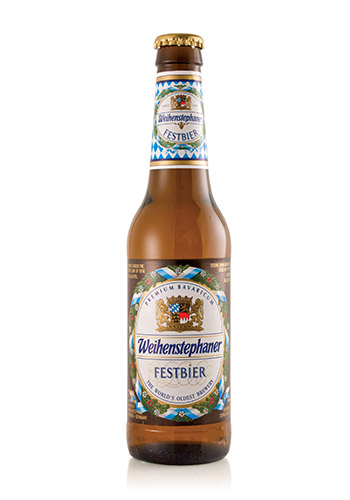
Style example: Weihenstephaner Festbier, ~6% abv.
Rauchbier (smoked lager) - Originating from Bamberg, Germany where the malt is traditionally smoked over beechwood. Nowadays, there can be a wide range of aromas and flavours depending on the type of wood used, from sweet subtle smoke to heavy peat and bacon-like flavours!
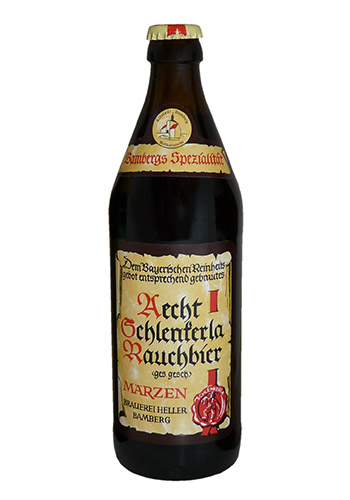
Style example: Aecht Schlenkerla Rauchbier, ~6.5% abv.
Bock - Ranging in colour from light amber to dark brown, the family of strong lagers (including Bock, Doppelbock, Maibock, Eisbock) typically have a heavier, sweeter complex malt base with flavours of toffee, caramel, and nuttiness. More robust hopping provides increased bitterness to balance the sweetness.
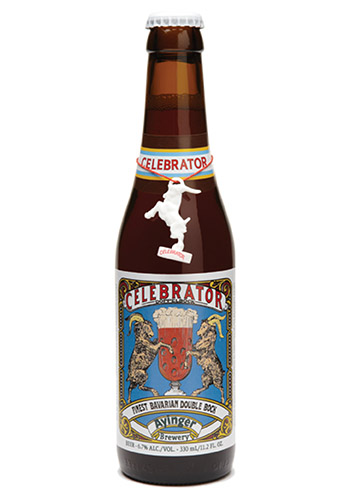
Style example: Weihenstephaner Korbinian 7.4% abv; Ayinger Celebrator Doppelbock 6.8% abv.
- T -
